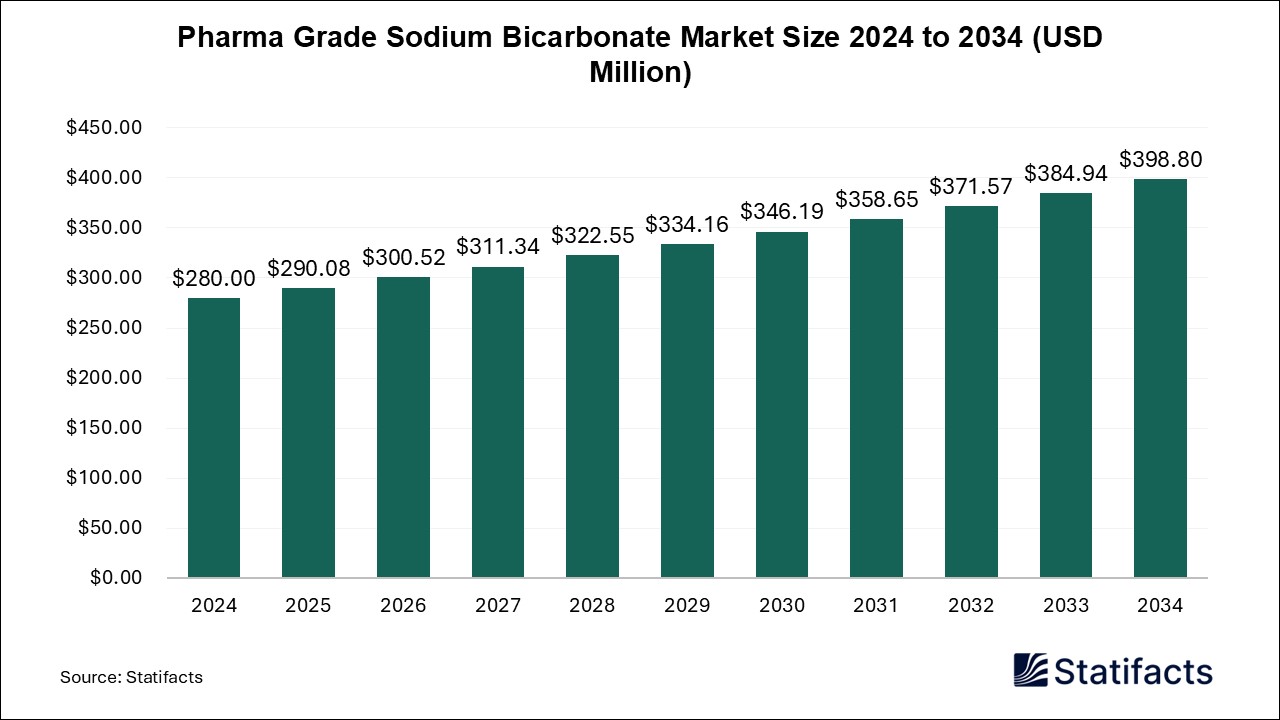Last Updated: 16 May 2025
Source: Statifacts
By clicking “Accept All Cookies” you agree to the storing of cookies on your device to enhance site navigation, analyze site usage, and assist in our marketing efforts.
Privacy PolicyThe Europe metaverse market size surpassed USD 34.1 billion in 2024 and is predicted to reach around USD 2,191.9 billion by 2034, registering a CAGR of 51.63% from 2025 to 2034.
| Industry Worth | Details |
| Market Size in 2025 | USD 48.5 Billion |
| Market Size by 2034 | USD 2191.9 Billion |
| Market Growth Rate from 2025 to 2034 | CAGR of 51.63% |
Metaverse is made up of a set of technologies that allow humans to interact with virtual environments in a number of ways using augmented reality, virtual reality, and extended reality hardware. Applications of the metaverse include entertainment, education, medical, and industrial sectors. E-commerce and mass audience attraction. Some metaverse implementations also rely on digital currencies such as cryptocurrency, which can be traded as non-fungible tokens (NFTs) and track ownership using blockchain technology.
Europe’s metaverse market is considerably growing at a rapid rate due to the rise in usage of metaverse platforms amongst consumers, increased investment in metaverse, rising popularity of interaction models, and digital identities across the globe. Moreover, an increase in usage of the metaverse in the media & entertainment industry also contributes to the market growth.
Increasing use of metaverse platforms
In Europe, people are increasingly adopting the metaverse platforms in their personal and professional lives. The metaverse helps people study from home, work from home, manage employees and workers, and still feel like part of reality. Companies and Schools are mainly using metaverse technologies to improve time efficiency or keep a check on students who are not paying attention. Moreover, they can also keep track of the work their workers are performing. Adoption of high-end and advanced devices like metaverse devices demands the need for proper training, and Meta has reportedly spent around US$150 billion to train people and build new learning tools.
Rising popularity of interaction models and digital identities across the globe
The Europe metaverse market is rapidly evolving with the rising popularity of interaction models and digital identities across the globe. A greater number of people are using the metaverse due to the importance of digital identities. People use their online names to communicate and work with each other, and especially after the pandemic, many companies and schools have shifted towards the online mode of working and teaching. Metaverse is increasingly being adopted by a number of people because it helps users meet in a digital world and play games, work, and communicate in real-time.
Security concerns related to virtual currencies
The concern for safety and security regulations is considered one of the biggest restraints for the metaverse market in Europe. A majority of the European population feels uncomfortable using digital currencies on such online platforms due to several instances of theft. Moreover, many European countries are reluctant to use digital currencies and consider the virtual currency system a threat to their monetary systems, and believe such currencies could be misused for malicious acts such as money laundering, drug trafficking, or even aiding terrorism. As a result, the countries have either banned or imposed heavy regulations on such virtual currencies.
Virtual Education and gaming & entertainment
Education in Europe is a booming market with people coming to the region for higher studies from abroad. With the integration of metaverse technology in the education system by the schools and colleges, they can use online methods to teach students more excitingly, such as students can sit in a virtual classroom and can perform science experiments, eliminating hazardous risks, and go on field trips without leaving their homes. Along with education, the gaming industry in Europe is immensely growing, and with advanced metaverse technology, the gaming experience is enhanced, and players can play together in virtual worlds and even watch live shows, musicals, and concerts.
By component, the hardware segment underwent notable growth in the market during 2024. This segment is made up of providers of consumer hardware such as extended reality hardware, AR/VR headsets, and displays. By component, the software segment is anticipated to expand rapidly.
By platform, the mobile segment experienced significant expansion in the market. Mobile devices, such as smartphones and tablets, are widely accessible to a broad demographic of users. By platform, the desktop segment is expected to emerge with notable growth during the forecast period.
By offering, the virtual platform segment saw strong growth during the studied period. Virtual platforms serve as the foundational infrastructure for accessing and interacting within the metaverse. By offering, the asset marketplace segment is expected to see notable performance in growth between 2025–2034. In the metaverse, users interact with digital assets such as virtual real estate, avatars, clothing, accessories, digital art, and virtual goods.
By technology, the virtual reality and augmented reality segment showed substantial gains in the market. The metaverse creates a sense of virtual presence with the use of 3D virtual environments. The technology which is used in order to create this sense of virtual presence is
virtual reality and augmented reality. By technology, the blockchain segment is set to experience the most robust growth across the market. Blockchain technology helps in providing digital proof of ownership, transfer of value through crypto or governors, and digital collectability of assets.
By end-user, the media and entertainment segment showed noteworthy growth in the market. The media and entertainment sector is helping to improve the social interactions of the participants. In order to add value to the entertainment brands to enhance their operations like world building, immersive storytelling, and unleashing the fan creativity, the companies are making use of metaphors concept.
By end-user, the retail segment is expected to see relatively strong growth during the forecast period of 2025 to 2034. The metaverse offers the potential for immersive virtual environments where users can shop for products and services in a highly interactive and engaging manner.
Published by Yogesh Kulkarni
Last Updated: 16 May 2025
Source: Statifacts
Last Updated: 16 May 2025
Source: Statifacts
| Subsegment | 2024 | 2025 | 2026 | 2027 | 2028 | 2029 | 2030 | 2031 | 2032 | 2033 | 2034 |
|---|---|---|---|---|---|---|---|---|---|---|---|
| AR & VR | 20.53 | 29.06 | 41.72 | 60.79 | 89.63 | 133.72 | 203.31 | 313.45 | 490.48 | 778.83 | 1,254.65 |
| Mixed Reality | 1.93 | 2.79 | 4.09 | 6.08 | 9.14 | 13.91 | 21.57 | 33.92 | 54.15 | 87.71 | 144.14 |
| Blockchain | 7.47 | 10.71 | 15.58 | 23.00 | 34.35 | 51.91 | 79.96 | 124.88 | 197.97 | 318.46 | 519.73 |
| Others | 4.18 | 5.97 | 8.64 | 12.68 | 18.83 | 28.29 | 43.30 | 67.17 | 105.73 | 168.82 | 273.38 |
Last Updated: 16 May 2025
Source: Statifacts
| Subsegment | 2024 | 2025 | 2026 | 2027 | 2028 | 2029 | 2030 | 2031 | 2032 | 2033 | 2034 |
|---|---|---|---|---|---|---|---|---|---|---|---|
| AR & VR | 20.53 | 29.06 | 41.72 | 60.79 | 89.63 | 133.72 | 203.31 | 313.45 | 490.48 | 778.83 | 1,254.65 |
| Mixed Reality | 1.93 | 2.79 | 4.09 | 6.08 | 9.14 | 13.91 | 21.57 | 33.92 | 54.15 | 87.71 | 144.14 |
| Blockchain | 7.47 | 10.71 | 15.58 | 23 | 34.35 | 51.91 | 79.96 | 124.88 | 197.97 | 318.46 | 519.73 |
| Others | 4.18 | 5.97 | 8.64 | 12.68 | 18.83 | 28.29 | 43.30 | 67.17 | 105.73 | 168.82 | 273.38 |
To get full access to our Market Insights, you need a Professional Account or a Business Suite.

You will receive an email from our Business Development Manager. Please be sure to check your SPAM/JUNK folder too.

You will receive an email from our Business Development Manager. Please be sure to check your SPAM/JUNK folder too.

Our customers work more efficiently and benefit from


